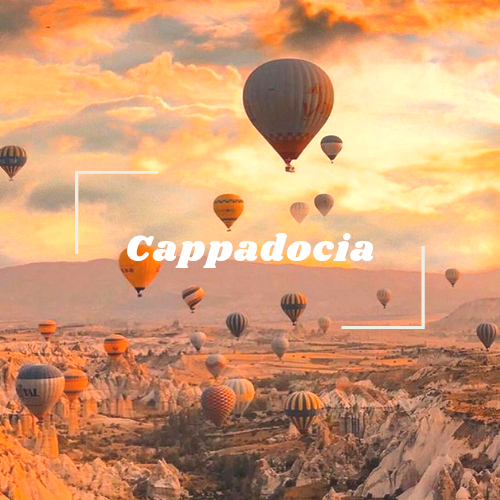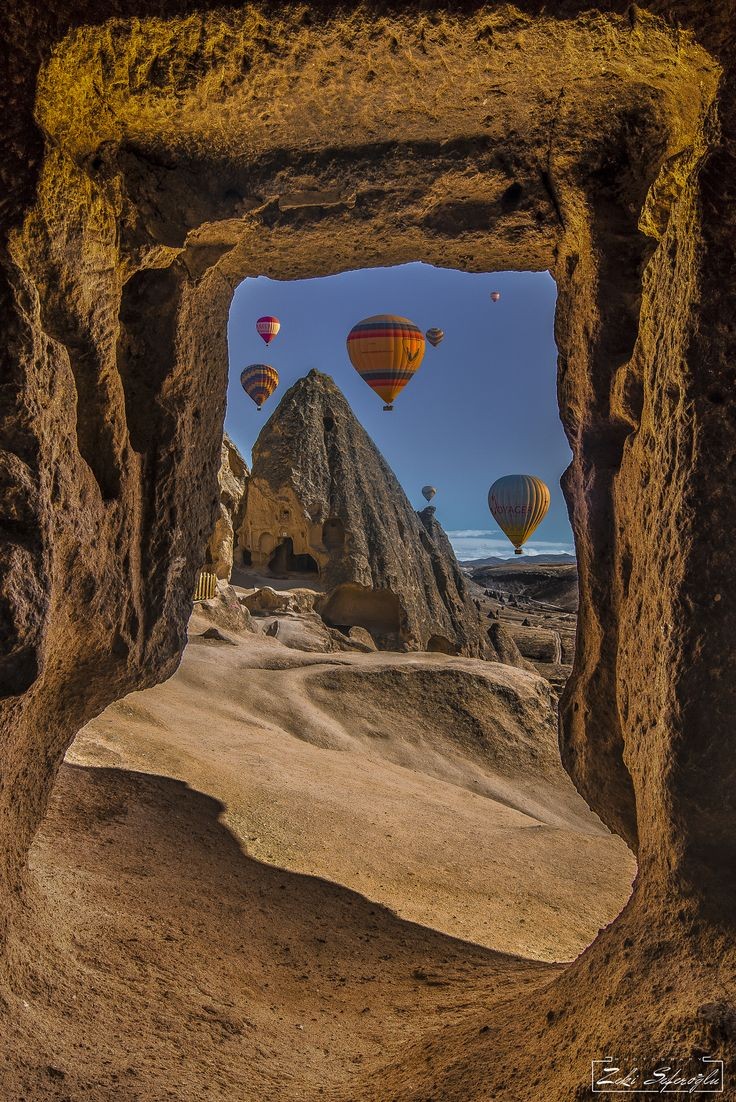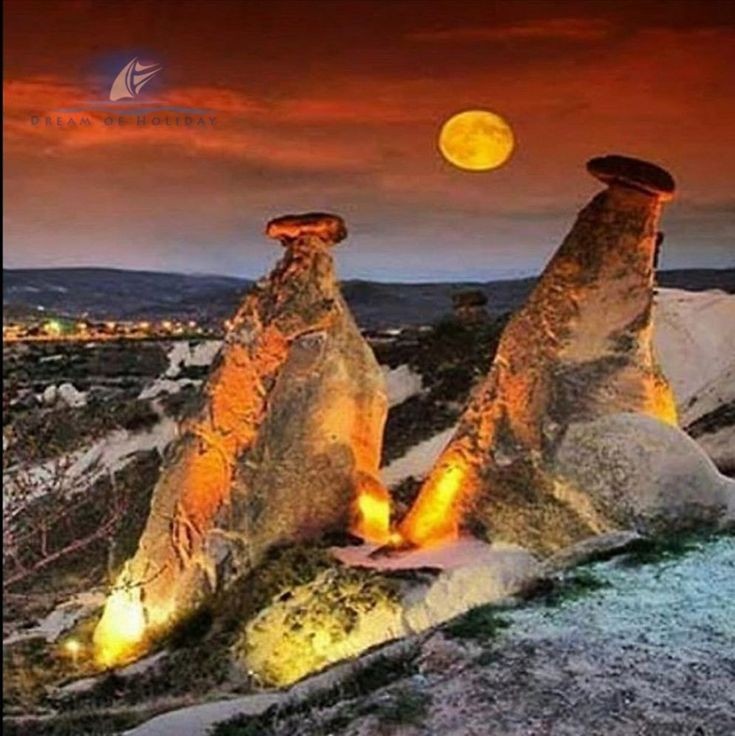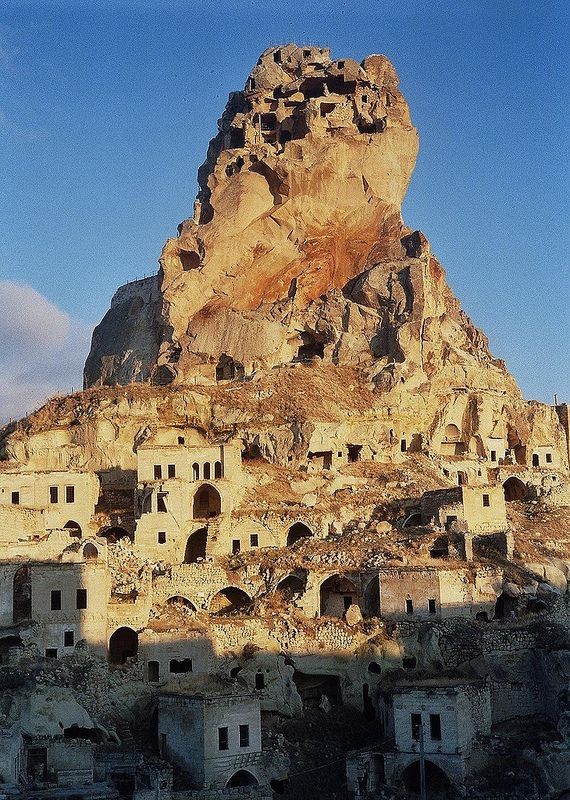CAPPADOCIA

Source
URGUP
It is possible to examine the history of Ürgüp, whose past dates back to historical ages, by turning the pages of the history of Cappadocia. It connects the west-east and north-south directions in ancient times as it is today.
Macedonians (Alexander the Great), Romans, Fatih and Yavuz, who went to the east, and the Ottoman sultans who followed them always passed through this region and made their supplies here. The region was called "Katpatuka" in the Assyrian period "Cappadocia" in classical times. Ürgüp has become an area that cannot be shared between Etiler and Egyptians because it is covered with tuff layer and is very soft and it is a great help in protection, and it has caused frequent wars due to its strategic importance. Having gathered its strategic value and the most favorable conditions bestowed on it by nature, Ürgüp and its surroundings are fixed by archaeological witnesses, historical records and living examples, where they lived a very rich, lively and colorful life in the past.
Until the birth of science branches such as Hittitology, Sumerology, Physiology of Ancient Languages, our knowledge is based on the semi-legendary knowledge of Greek historians in BC The first century was not past. In the 19th century, it was possible to see the traces of settlement in Cappadocia by going down to 5000-4000 BC with the above-mentioned sciences.
The arrival of writing in Anatolia was spread by the Assyrians, who established commercial colonies in this region in 2000 BC. The Hittite Kingdom ruled in 1000 BC. Cappadocia, which was united with the Lydian Kingdom in the sixth century and witnessed a great civilization, fell under Persian rule in 521 BC.
The Macedonian King Alexander the Great, who passed through the region in 334 BC, came under the rule of Alexander the Great, and Alexander the Great assigned one of his commanders to manage this region on his behalf.Armed by Ariarrathes I, who established the Kingdom of Cappadocia in 323 BC, the sovereign took its place in the history pages of the Great Kingdom of Cappadocia and Ürgüp, which is in the region, lived its brightest periods. The cities of Ürgüp and Kemerhisar, and Kayseri are among the civilized cities of Cappadocia. During this period, nearly 30 thousand people lived in Ürgüp.
The Kingdom of Cappadocia was invaded by the Romans in 27 BC and became a province of the Roman Empire. With the settlement of Christianity in this region, churches and chapels were built by Christians since 53 AD, and the region became a shelter for the persecuted Christians in Jerusalem and Syria. Despite the persecution of the pagan Rome in particular, Christianity found the opportunity to develop in the Ürgüp region, and the valleys formed as a result of volcanic and erosional activities and taking shelter in the caves excavated by the Etiler became the shelter of the first Christians who escaped from tyranny and death. When Christians were given religious freedom in AD 336, Christianity spread rapidly around Cappadocia and became the religious center of the priests who retreated to the column. Many churches that can be visited today were built since the 5th century, and started to be illustrated after the removal of Iconoclasm in 842.
After the Roman Empire split into two in 395, Cappadocia fell into the share of the Eastern Roman (Byzantine) empire. In the early days, Cappadocia was a quiet life away from external pressures. It remained a central state during the Justinian period (526-565). This happy era ended with sasani raids in the early VII century. They faced with the Arab invasions under the command of Maslama from the south. It became the outpost of the Byzantine empire in wars with the Arabs. During the periodic Arab invasions, Kayseri was occupied twice, in 647 and 726, Ankara in 838 and Kemerhisar in 806. The Byzantine empire was able to prevent Arab raids in the IX century. This critical period, which lasted for about 250 years, caused rock cappadocia to gain importance.Because the Christian people who escaped from the enemies migrated here and took refuge in the caves they carved into the rocks on the valley slopes. However, Sassanid and Arab raids were not the only reason in this century. The second reason for the migration was Iconoclasm cruelty and resentment.
Whether to use iconoclasm and the arts of depiction has been a matter of debate in Byzantium for a long time. In the Greeks, there have always been two conflicting conceptions of the idea of embodying God and the abstract conception of God in the east. Although Byzantium was an abstract conception of God, it needed the people's concrete conception of God. In 725, Emperor III. Leo banned the worship of images in 725. Many icons (pictures and statues of holy people) were destroyed. In 842, Empress Teodora ended the ban on depictions. Today is celebrated by Orthodox as a feast day. With the effect of the atmosphere of peace and security that prevailed in the middle of the X. and XI centuries, Kaya Cappadocia began to produce the most beautiful works. The churches in Göreme Open Air Museum are among the products of this period.
Cappadocia was attached to the Karamanoğlu Principality among the principalities that emerged as a result of the collapse of the Anatolian Seljuk State, which was established in 1080 after the Battle of Malazgirt in 1071. During this period, mosques, caravanserais and madrasahs started to appear besides churches and monasteries. There was no conflict between the Muslim population and the Christian public. Turkish-Islamic sovereignty did not interfere with the religious thought and behavior of Christian communities. He treated them with tolerance. During this period, church construction continued. "Broken Martyrs Church" in Şahinefendi Village is one of the last rock churches built in Cappadocia. (1216-1217)When Cappadocia fell under Ottoman rule, the Christian people abandoned their old active life. Rock churches and monasteries were evacuated.
Since the erosional result of Ürgüp creates a mystical soul on people, it has been the retreat corners of those who dream of the "Other World", which has been the place of those who prefer mystical life, to prepare for life after death.He carved dwellings into fairy chimneys, carved churches and decorated with frescoes, bringing the traces of thousands of years old civilizations to the present day. In order to save this incredible cultural treasure and not to lose it to others, even Thales of Miletus, for the sake of resisting the Persian invasions of the Lydian King, divided the Kızılırmak (Halys) into two and crossed the army, and the first scientific calculations in history were realized here again. The provinces and districts of the planet Kapodokya, due to the fact that the fame of Cappadocia has increased today and has exceeded its borders; The province and district names it covers are lost in this general definition.

Source
The natural beauties and cultural richness of Ürgüp, Avanos, Zelve and Göreme have attracted the attention of history writers and travelers for centuries. Cappadocia started to be known as "Katpatuka" during the Persians period and Katpatukka means the region where good horses are raised. However, it is still on the agenda that the word is Hatti, Luwit, Hittite and Assyrian. Therefore, resources related to horse and equine have been researched and important data have been obtained. During the Great State (1460-1190 BC), the Hittites gave great importance to horse breeding. For this purpose, we see that expert horse breeders from the hometown of Mitanni have brought in and their recommendations are printed on tablets and passed from generation to generation. Indeed, a work written by a young horse breeder from Mittani named Kikkuli was found in the Boğazköy State archive. Xenophon BC. Amasyalı Strabon M.S. Gregoir M.S. In 334-394 and again a young vineyard from Maccan (Göremeli) (AD 495-515) left us important writings about the history of the region.
Scientific research and publications started in the late 19th century. Analysis of the physical structure of the Cappadocia region and introduction of historical resources A.D. Mordtmann, W.M. Ramsey, J.R.S. Sterret and Ch. It was carried out by scientists like Texier. The monumental work named Cappadocia Rock Churches by G. de Jerphanion between 1907-1912; It is the first major study that systematically addresses rock churches, monasteries and wall frescoes in terms of art history. In 1958, the French Nicole Thierry and Catherine Jolivet helped Cappadocia achieve its present fame by publishing churches that were not included in the study of Jerphanion.
It takes days to describe this beautiful historical city! For now, in my next Cappadocia article, where I talk about its historical past, I hope to mention its current form, I hope your article attracted your attention.
Stay with love!

